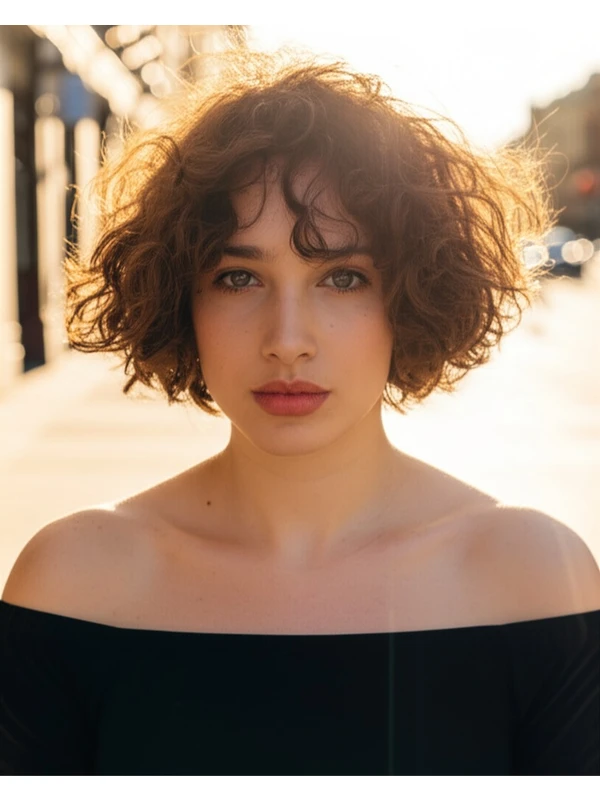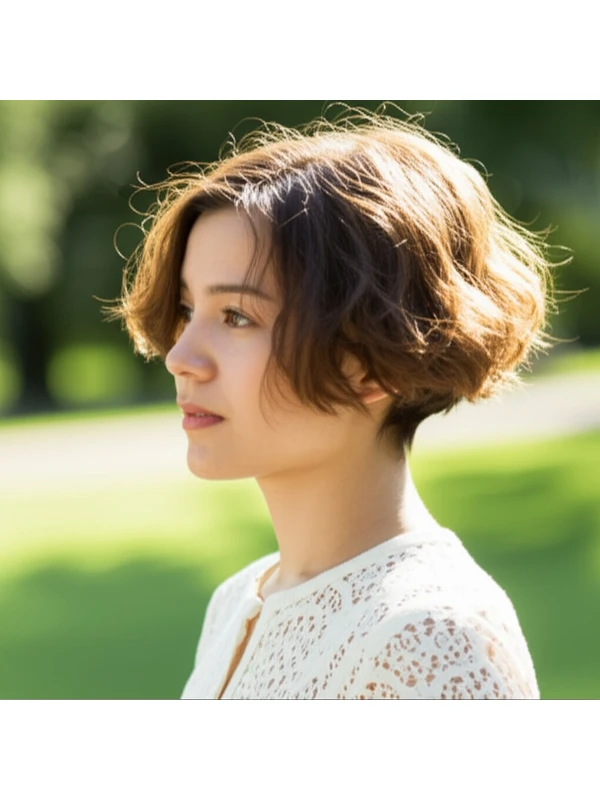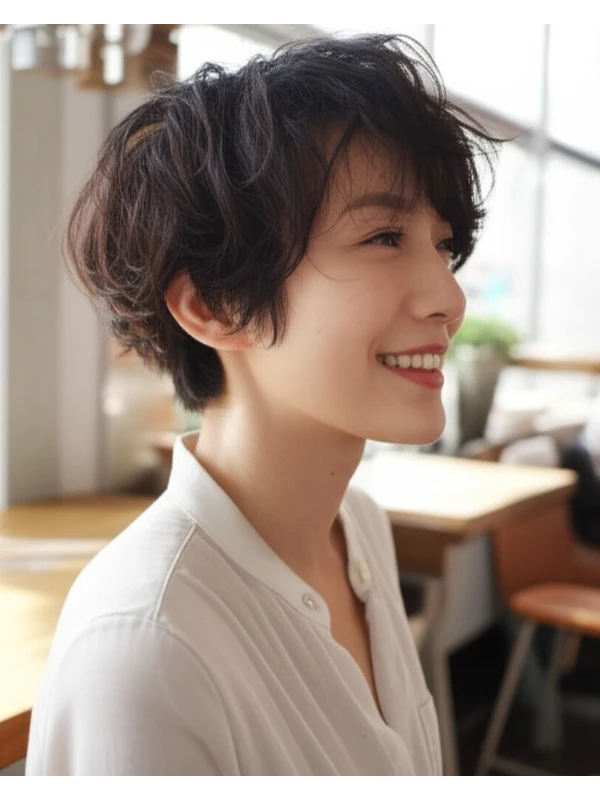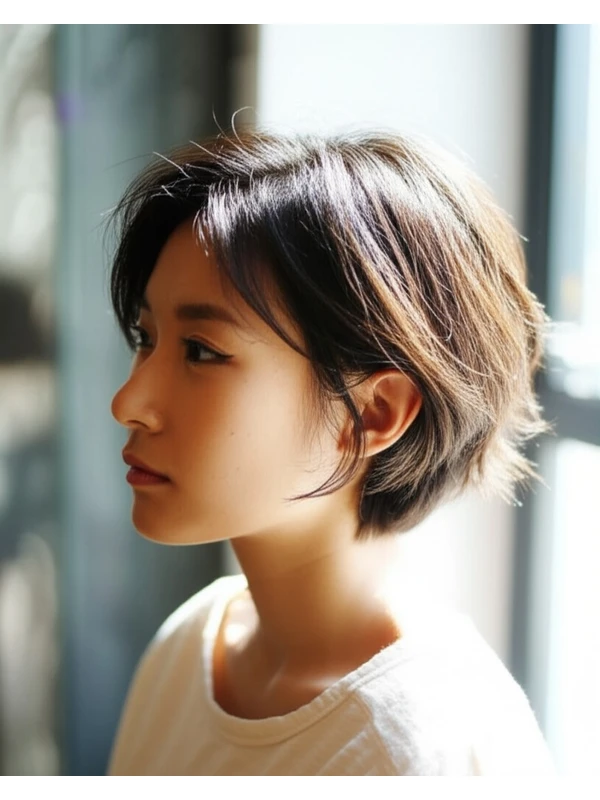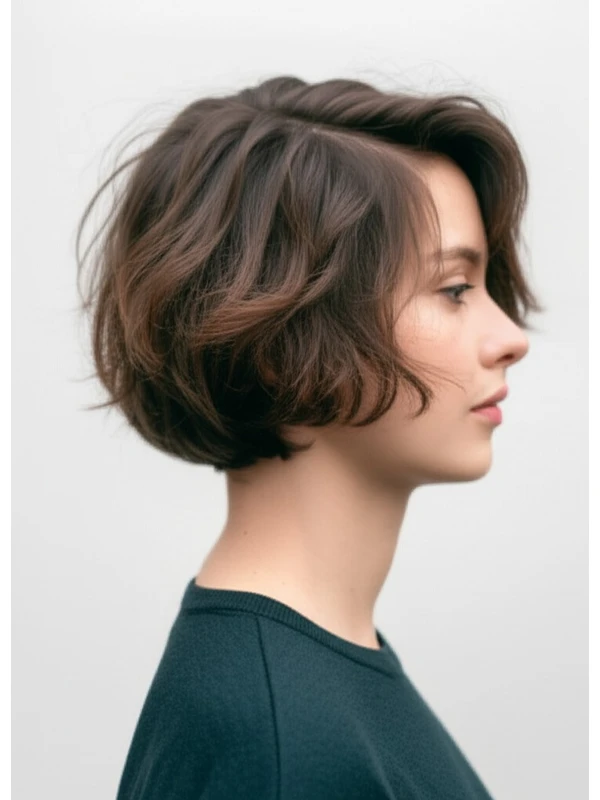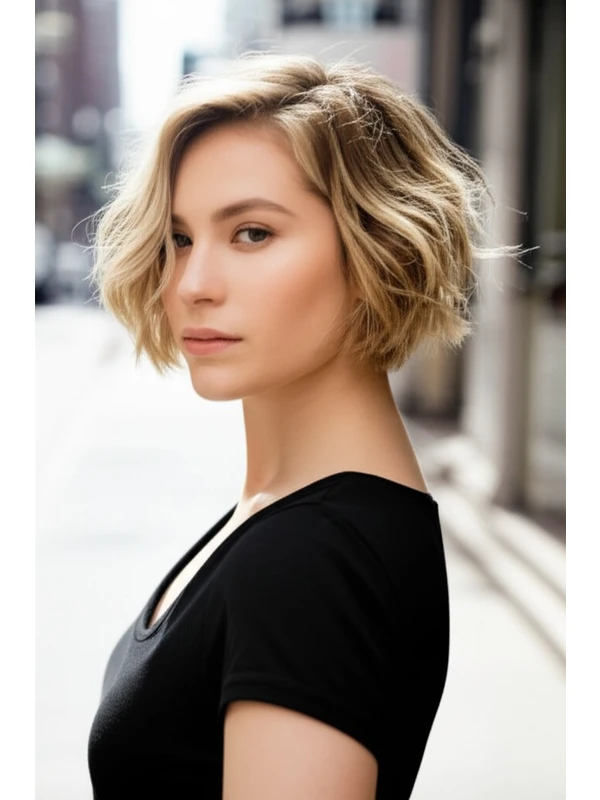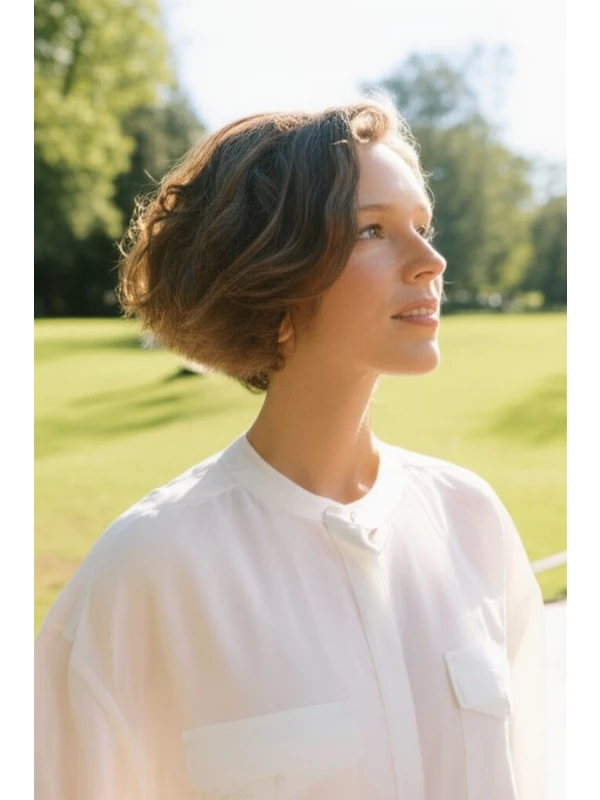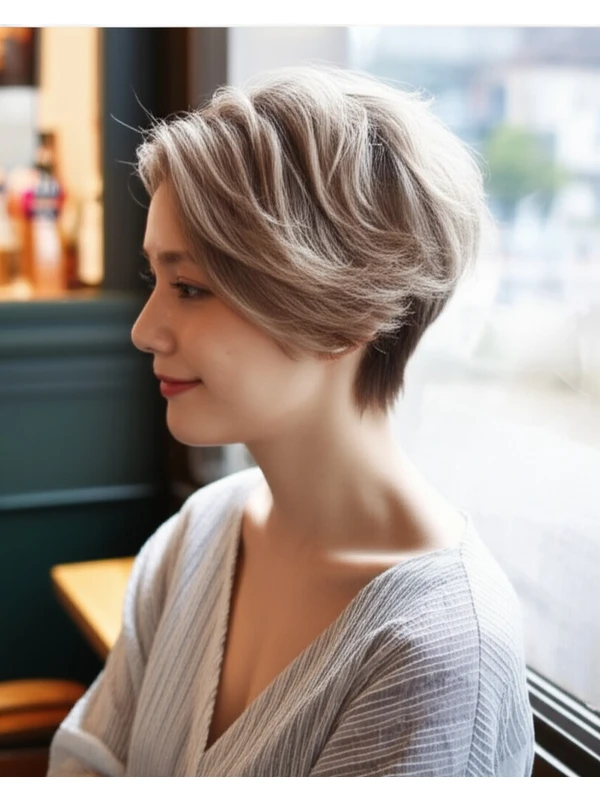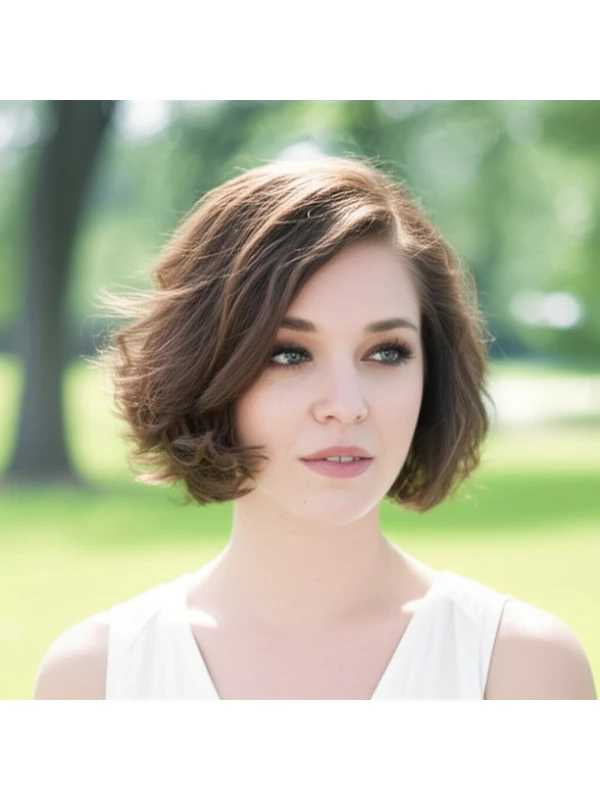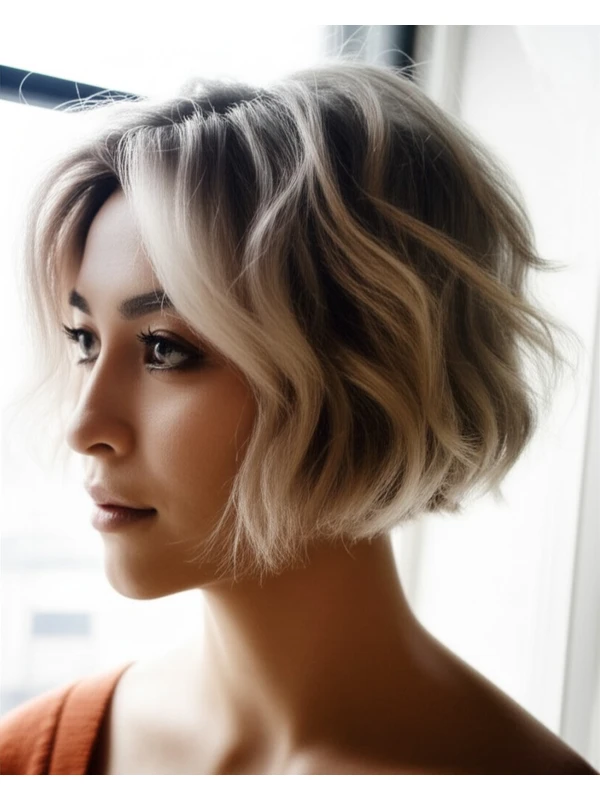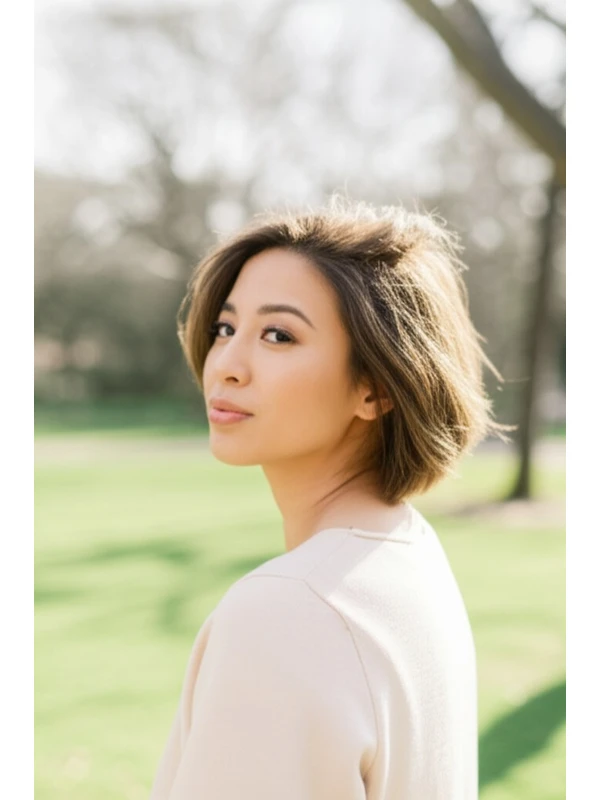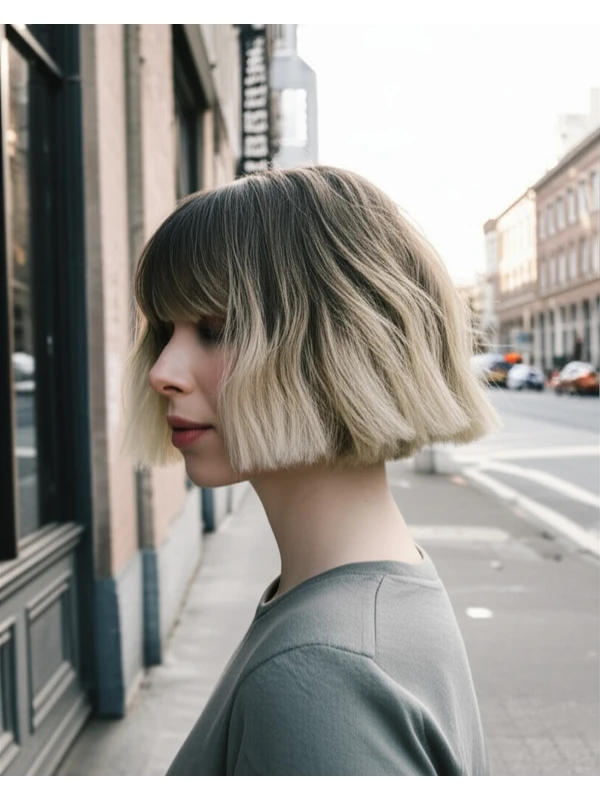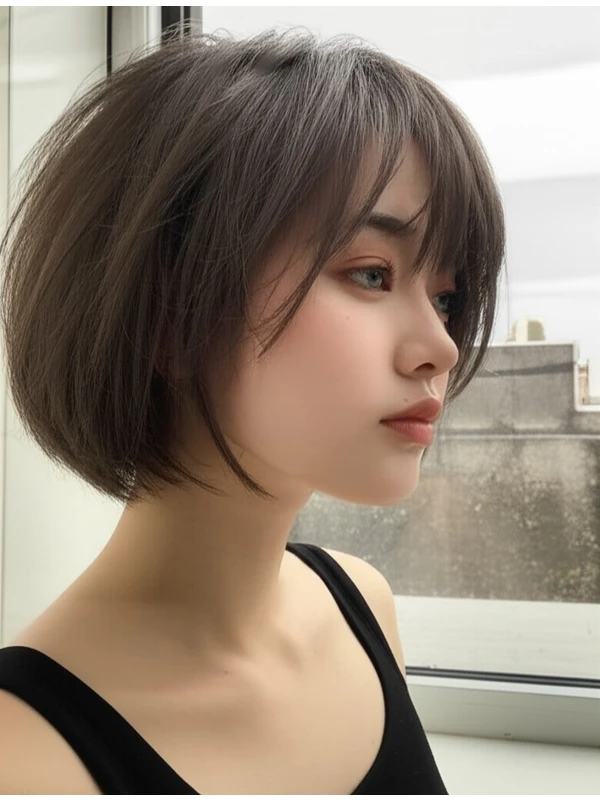#The Micro Bob: A Bold & Modern Statement
The micro bob is having a moment! This super-short hairstyle is making waves for its edgy appeal and surprisingly versatile nature. But is it right for you? Let's break down everything you need to know about this chic, cropped style.
#1) Background & Definition: What Exactly Is A Micro Bob?
The micro bob (also called a "baby bob," "micro cut," or simply a “short bob”) is essentially an extremely short version of the classic bob haircut. Think blunt lines, a sharp edge, and serious attitude! It’s characterized by its brevity – significantly shorter than a traditional bob.
- Cut Geometry: The micro bob typically features a very precise, often blunt cutline around the jaw or slightly above. Some variations include subtle layering for movement.
- Key Features: Clean lines, sharp angles, and a confident vibe are hallmarks of this style. It’s all about showcasing your face and neck.
- Length Ranges: Generally speaking, a micro bob sits between 4-7 inches (10-18 cm) long when dry. This can vary depending on individual preference and hair texture – what looks short on straight hair might appear longer on curly or coily textures due to shrinkage.
- Alternative Names: Baby Bob, Micro Cut, Short Bob, Blunt Crop
#2) Face Shape Fit: Finding Your Ideal Angle
The micro bob can be surprisingly flattering across a variety of face shapes! It’s all about adjusting the length and adding (or subtracting) volume strategically.
- Oval Faces: Lucky you! Most styles work well with oval faces, and the micro bob is no exception. A blunt cut showcases your balanced features beautifully. Consider a side part for added asymmetry.
- Fringe Option: Wispy or curtain bangs soften the look.
- Round Faces: The key here is to add length and create angles. A slightly longer micro bob (closer to 7 inches) elongates the face. Avoid too much volume at the sides.
- Fringe Option: A deep, angled fringe can help break up roundness.
- Square Faces: Soften those strong jawlines! The micro bob works well with a slightly layered style and a softer front edge.
- Fringe Option: A textured, piece-y fringe helps to soften the angles.
- Heart Faces: Balance that wider forehead with a micro bob that has some volume at the chin. This adds fullness to the lower part of the face.
- Fringe Option: Side-swept bangs are very flattering and help balance a heart shape.
- Diamond Faces: Similar to oval faces, diamond shapes can rock this style! Focus on softening angles with subtle layering or a side part.
- Fringe Option: A blunt fringe can add width to the forehead.
- Oblong (Long) Faces: Avoid styles that make your face appear even longer. Opt for a micro bob with more volume at the sides and consider a full, straight-across fringe.
#3) Body Proportions & Height Guidance: Playing With Silhouette
The micro bob isn’t just about your face; it impacts your overall silhouette!
- Petite: A shorter, blunt micro bob can actually add visual height to someone petite. Avoid excessive volume on top that could overwhelm the frame.
- Average Height: Most lengths work well for average heights. Experiment with different partings and styling techniques to find what you love best.
- Tall: A slightly longer micro bob (closer to 7 inches) can help balance a taller stature. Consider adding volume at the roots for extra lift.
- Narrow Shoulders: Adding some texture or subtle layering around the shoulders will create the illusion of broader shoulders.
- Broad Shoulders: Keep the style relatively sleek and close to the head to avoid emphasizing shoulder width.
- Short Neck: A micro bob can actually make a short neck appear longer! Avoid styles with excessive volume at the crown. A side part is generally more flattering than a center part.
- Long Neck: Volume on top helps fill out space and create balance with a long neck.
#4) Works Best With Hair Types & Densities: Texture Matters
The micro bob's success hinges on understanding your hair’s unique characteristics.
- Straight Hair: A micro bob looks incredibly sharp and clean on straight hair, showcasing the blunt lines beautifully.
- Wavy Hair: Waves add natural texture and movement to a micro bob! Embrace the bends with minimal styling.
- Curly/Coily Hair: This style can be stunning, but shrinkage is key to consider. What looks like a 6-inch cut might end up being much shorter once dry. Consulting with a stylist experienced in cutting textured hair is essential.
- Fine Hair: A micro bob creates the illusion of thickness! Layers are generally not recommended as they can make fine hair look even thinner.
- Medium/Thick Hair: This style works well, but be mindful of bulkiness. Strategic layering (done by a skilled stylist) can help distribute weight and prevent it from looking too heavy.
- Density Tips: For denser hair, consider point-cutting to remove some weight and create movement. For finer hair, focus on creating the illusion of volume with root lifting techniques.
- Shrinkage Factor: Coily textures often experience significant shrinkage (sometimes 50% or more). Factor this into your desired length when discussing the cut with your stylist!
#5) Styling Variations: From Sleek to Textured
The micro bob is a blank canvas for creativity!
- Sleek vs. Textured: A sleek, polished look works well for professional settings. For a more casual vibe, embrace texture and natural waves or curls.
- Middle vs. Side Part: A center part creates symmetry; a side part adds asymmetry and can soften features.
- Fringe Variations: Blunt bangs, wispy bangs, curtain bangs – the possibilities are endless!
- Occasion Styling:
- Casual: Air-dried with a texturizing product for effortless cool.
- Office: Sleeked back with serum or pomade for a polished look.
- Evening: Add volume at the roots and use hairspray for hold and shine.
#6) Maintenance: Keeping It Sharp
Regular trims are essential to maintain the micro bob's shape.
- Trim Cadence: Every 4-6 weeks is typical, depending on how quickly your hair grows and how precise you want the lines to remain.
- At-Home Routine: Gentle cleansing and moisturizing are key.
- Heat vs Air Dry: Minimize heat styling whenever possible to prevent damage. When using heat, always use a protectant spray.
- Product Checklist:
- Shampoo & Conditioner (for your hair type)
- Leave-in Conditioner (especially for dry or curly/coily hair)
- Heat Protectant (if you use hot tools)
- Styling Cream/Pomade/Serum (depending on desired texture)
- Hairspray (for hold and shine)
- Estimated Daily Styling Time: 5-15 minutes, depending on the style.
#7) Grow-Out Roadmap: The Evolution of a Short Cut
The micro bob evolves as it grows out. Here's what to expect:
- Months 1-3: Maintains its sharp, defined shape. Regular trims are crucial.
- Months 4-6: Starts to lose some definition and can look slightly more "rounded." Layering might be added to soften the edges if desired. It’s a good time to experiment with different styling techniques.
- Maintaining Shape: Between cuts, use dry shampoo at the roots for volume and texture.
#8) Color Pairings: Enhancing Your Look
Color can dramatically enhance a micro bob!
- Cool Undertones (pink, blue): Icy blondes, silver tones, cool browns.
- Warm Undertones (yellow, gold): Honey blondes, copper reds, warm caramels.
- Low-Commitment Options: Balayage or highlights add dimension without a drastic color change. Root smudging creates a softer grow-out.
#9) Season & Occasion Guide: Styling for Every Event
- Spring/Summer: Embrace lighter textures and brighter colors! Air dry with sea salt spray for beachy waves.
- Fall/Winter: Add warmth and depth to your color palette. Sleek, polished styles are perfect for holiday parties.
- Work: A classic, sleek micro bob exudes professionalism.
- Weddings/Parties: Experiment with volume and texture! Consider adding a decorative hair accessory.
#10) Cost & Time: Salon Details
- Salon Time: Expect to spend approximately 30-60 minutes in the salon for the initial cut.
- Price Range: The cost can vary widely depending on location and stylist experience, but generally falls within a moderate price range (more than a basic trim, less than an elaborate style).
#11) Pros & Cons: Weighing Your Options
Pros:
- Edgy and stylish.
- Easy to manage (with regular trims).
- Showcases your facial features.
- Can create the illusion of thickness.
Cons:
- Requires frequent salon visits for maintenance.
- Not as versatile as longer styles initially, but can be styled in many ways once you get used to it!
- Can feel "short" and require a period of adjustment.
#12) Salon Consultation Script: Your Checklist
Here are some questions/points to bring up with your stylist:
- “I’m interested in a micro bob, but I'm concerned about [specific concern – e.g., my round face, hair shrinkage].”
- "Can you show me examples of micro bobs on people with similar hair texture and face shape as mine?"
- "What length would be best for me considering my hair’s natural curl pattern/shrinkage?”
- “How can we incorporate layers to add movement without making my hair look thin?”
- "What products do you recommend for styling and maintaining this cut at home?"
#FAQs: Your Burning Questions Answered
- Is a micro bob suitable for fine hair? Yes! It can actually make fine hair appear thicker, but strategic layering is important to avoid looking too thin.
- How much will my hair shrink if I have curly/coily hair? Shrinkage varies greatly; expect anywhere from 20-50% or more. Discuss this with your stylist beforehand!
- Can I style a micro bob in a ponytail? Not really, unless it’s a very small, high ponytail. The length is simply too short for most traditional ponytails.
- How do I prevent my micro bob from looking blunt and boxy? Ask your stylist to incorporate subtle layering or point-cutting to soften the edges.
- What if I don’t want bangs with a micro bob? No problem! A micro bob looks just as chic without bangs – embrace the clean lines.
- Can I dye my hair a bold color with a micro bob? Absolutely! The short length makes it easier to manage and maintain vibrant colors, but be prepared for more frequent touch-ups.
- Is this style suitable for older women? Definitely! A micro bob can be incredibly youthful and flattering at any age, especially when styled with soft layers or a side part.
- How long will it take to grow out if I don't like the cut? Growing out a micro bob takes time – expect several months (6-12) before it reaches shoulder length. Regular trims are still needed to blend the lines during the grow-out process!
